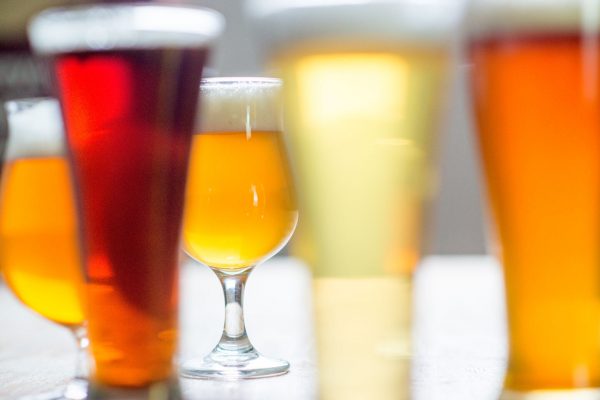
The following beer recipe is featured in the May/June2008 issue of Zymurgy magazine. Access this issue along with the archives with Zymurgy Online!
This recipe by Rick Debar of the Barrel House Brewing Company and Ray Snyder of the Bloatarian Brewing League is from the May/June 2008 issue of Zymurgy magazine. Bosmo’s Imperial Cream Ale was developed as a joint project between the homebrewers and the professional brewers of Greater Cincinnati. The name is in honor of the Bloatarian Brewing League’s iconic mascot, Bosmo; but the style is a tribute to the long history of excellent relationships between the homebrewing community and the professional brewers of the area.
Cream ale was chosen as the base style, because it was popularized in Cincinnati. Some people think ale brewers created cream ale to compete with the new lager beers in the latter part of the 19th century. Others believe the German brewmasters in America simply applied their experience with German ales to create cream ale. Either way we’re sure you will enjoy it!
The following beer recipe is featured in the May/June2008 issue of Zymurgy magazine. Access this issue along with the archives with Zymurgy Online!
This recipe by Rick Debar of the Barrel House Brewing Company and Ray Snyder of the Bloatarian Brewing League is from the May/June 2008 issue of Zymurgy magazine. Bosmo’s Imperial Cream Ale was developed as a joint project between the homebrewers and the professional brewers of Greater Cincinnati. The name is in honor of the Bloatarian Brewing League’s iconic mascot, Bosmo; but the style is a tribute to the long history of excellent relationships between the homebrewing community and the professional brewers of the area.
Cream ale was chosen as the base style, because it was popularized in Cincinnati. Some people think ale brewers created cream ale to compete with the new lager beers in the latter part of the 19th century. Others believe the German brewmasters in America simply applied their experience with German ales to create cream ale. Either way we’re sure you will enjoy it!
Ingredients:
- 9.75 lb (4.42 kg) 2-Row Brewers Malt
- 1.25 lb (0.57 kg) Flaked Maize
- 0.6 lb (0.27 kg) Briess Cara-Pils Malt
- 1.25 lb (0.57 kg) Corn Sugar (Add at boil and boil for 90 min.)
- 0.75 oz (21.26 g) Hallertau Mittelfruh Hop Pellets, 4.5% alpha acid (45 min.)
- 0.9 oz (25.51 g) Willamette Hop Pellets, 5.5% alpha acid (45 min.)
- 1.1 oz (31.18 g) Hallertau Mittelfruh Hop Pellets, 4.5% alpha acid (5 min.)
- White Labs WLP001 California Ale Yeast
Specifications:
Yield: 5 gallons (19 L)
Original Gravity: 1.071
Final Gravity: 1.014
ABV: 7.45%
IBU: ~37
SRM: 3.8 (7.5 EBC)
Boil Time: 90 minutes
Efficiency: 75%
Directions:
Use a step mash with time +15-minute steps starting at 121°F (49°C) for 30 minutes, 145°F (63°C) for 45 minutes, and 158°F (70°C) for 60 minutes. Mash out at 168°F (76°C) and sparge with 166°F (74°C). Collect enough wort (about 6.12 gallons or 23.17 liters) to end up with 5 gallons (19 liters) after a 90-minute boil, chill to 68°F (20°C), rack to fermenter, pitch yeast and aerate well. Pitch two packages of yeast or a half-gallon starter. Ferment at 61-62°F (16-17°C) for 4 to 5 days, then rack to secondary fermenter and cellar for three to four weeks at 45-50°F (7-10°C). When ready, bottle and condition for a minimum of two weeks.

Join for Less Than a Pint
Subscribe for only $4.99/month
Members get discounts on beer, food, and merchandise, plus a subscription to Zymurgy magazine online, and unlimited access to medal-winning and clone recipes for just $4.99 a month.

Share Post